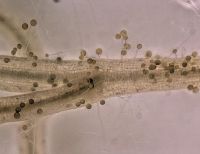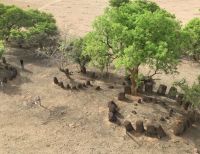The research, led by a team from Princeton University, found clear evidence that Megalodon and some of its ancestors were at the very highest rung of the ancient food chain – what scientists call the highest trophic level. Their trophic signature is so high that they must have eaten other predators and predators-of-predators in a complicated food web, say the researchers.
“If Megalodon existed in the modern ocean, it would thoroughly change humans’ interaction with the marine environment,” said co-author Danny Sigman, who led the new nitrogen analysis at Princeton University.
To reconstruct the prehistoric marine food web, Kast, Sigman and their colleagues measured the shark’s teeth for nitrogen isotopes — which can be used like a time machine to decode an organism’s position in the food chain.
Ecologists have long known that the more nitrogen-15 an organism has, the higher its trophic level, but scientists have never before been able to measure the tiny amounts of nitrogen preserved in the enamel layer of these extinct predators’ teeth.
The new analysis was challenging — even the largest tooth has only a thin casing of enamel, of which the nitrogen component is only a tiny trace, demanding high precision work. They used a custom-built, automated nitrous oxide preparation system that extracts, purifies, concentrates, and delivers the gas to a specialised stable isotope ratio mass spectrometer.
High levels of the isotope nitrogen-15 in the Megalodon’s teeth indicated to the researchers that many of these sharks had a diet composed entirely of top carnivores that themselves ate other large carnivores, the way polar bears and orcas do today.
Many plants, algae and other species at the bottom of the food web turn nitrogen from the air or water into nitrogen in their tissues. Organisms that eat them then incorporate that nitrogen into their own bodies and preferentially excrete more of nitrogen’s lighter isotope, nitrogen-14, than its heavier cousin, nitrogen-15.
This means that nitrogen-15 builds up in organisms as you climb the food chain. Working on this premise, Sigman and his team have spent decades developing methods to detect nitrogen isotopes in organism’s cells — in doing so revealing their position in ancient food chains.
The technique has already been used by other researchers on geologically recent samples — up to fifteen thousand years old — but, in even older animals the soft tissue needed for nitrogen analysis is rarely preserved.
To complicate matters, sharks don’t have bones — their skeletons are made of cartilage. But sharks do have one golden ticket into the fossil record: teeth. Teeth are more easily preserved than bones because they are encased in enamel, a rock-hard material that is virtually immune to most decomposing bacteria.
“Teeth are designed to be chemically and physically resistant so they can survive in the very chemically reactive environment of the mouth and break apart food that can have hard parts,” said Sigman. In addition, sharks are constantly growing and losing teeth which means that every shark produces thousands of teeth over its lifetime.
“When you look in the geologic record, one of the most abundant fossil types are shark teeth,” said Sigman. Since shark teeth are so abundant and are preserved so well, the nitrogen signatures in enamel provide a way to measure status in the food web, whether the tooth fell from a shark’s mouth millions of years ago or yesterday.
By taking data from a series of fossil shark teeth from different time periods, the researchers were able to trace their trophic level versus their size. Scanning through the literature during the first lockdowns, Kast also compiled a dataset of tens of thousands of modern marine animals with which to compare the new fossil record.
Kast, who is also a Fellow at Trinity Hall, now wants to replicate the method for other organisms, to reconstruct their hierarchy within an entire ecosystem. “Our tool has the potential to decode ancient food webs; what we need now is samples,” she said. “I’d love to find a museum or other archive with a snapshot of an ecosystem — a collection of different kinds of fossils from one time and place, from forams near the very base of the food web, to otoliths — inner ear bones — from different kinds of fish, to teeth from marine mammals, plus shark teeth. We could do the same nitrogen isotope analysis and put together the whole story of an ancient ecosystem.”
Reference:
Kast, E. R. et al., Cenozoic megatooth sharks occupied extremely high trophic positions, Science Advances (2022), DOI: 10.1126/sciadv.abl6529
Adapted from a Princeton University press release.
















